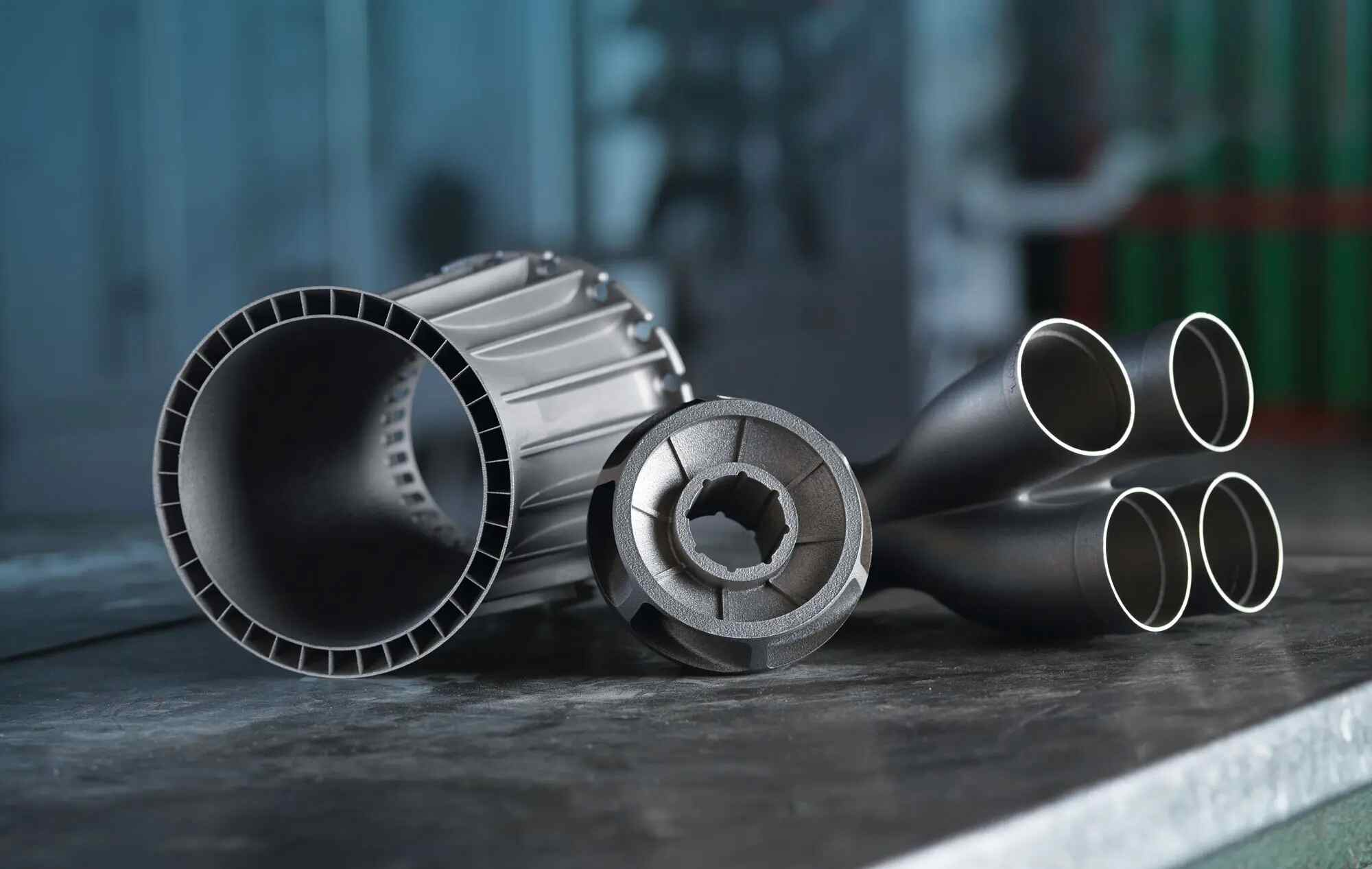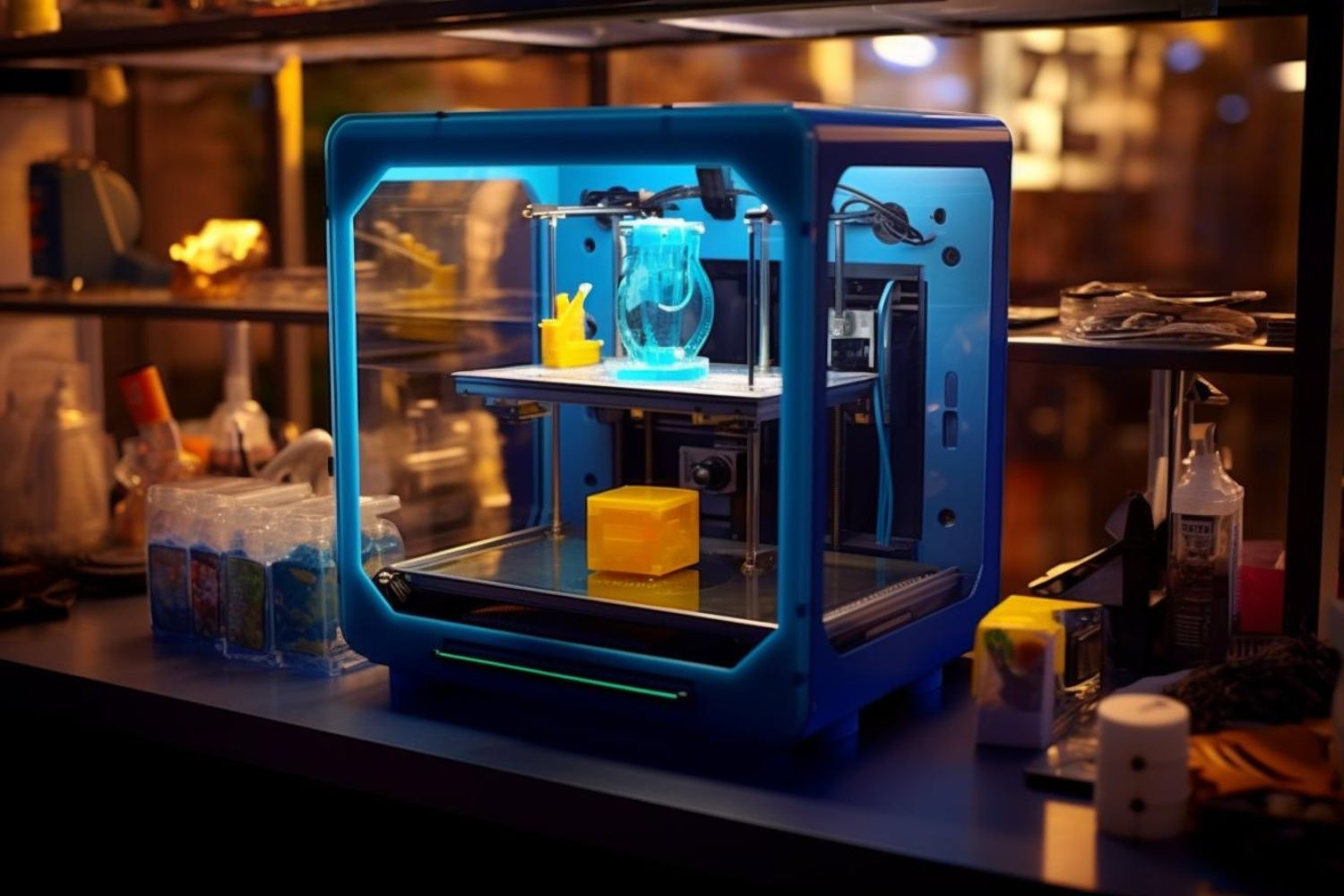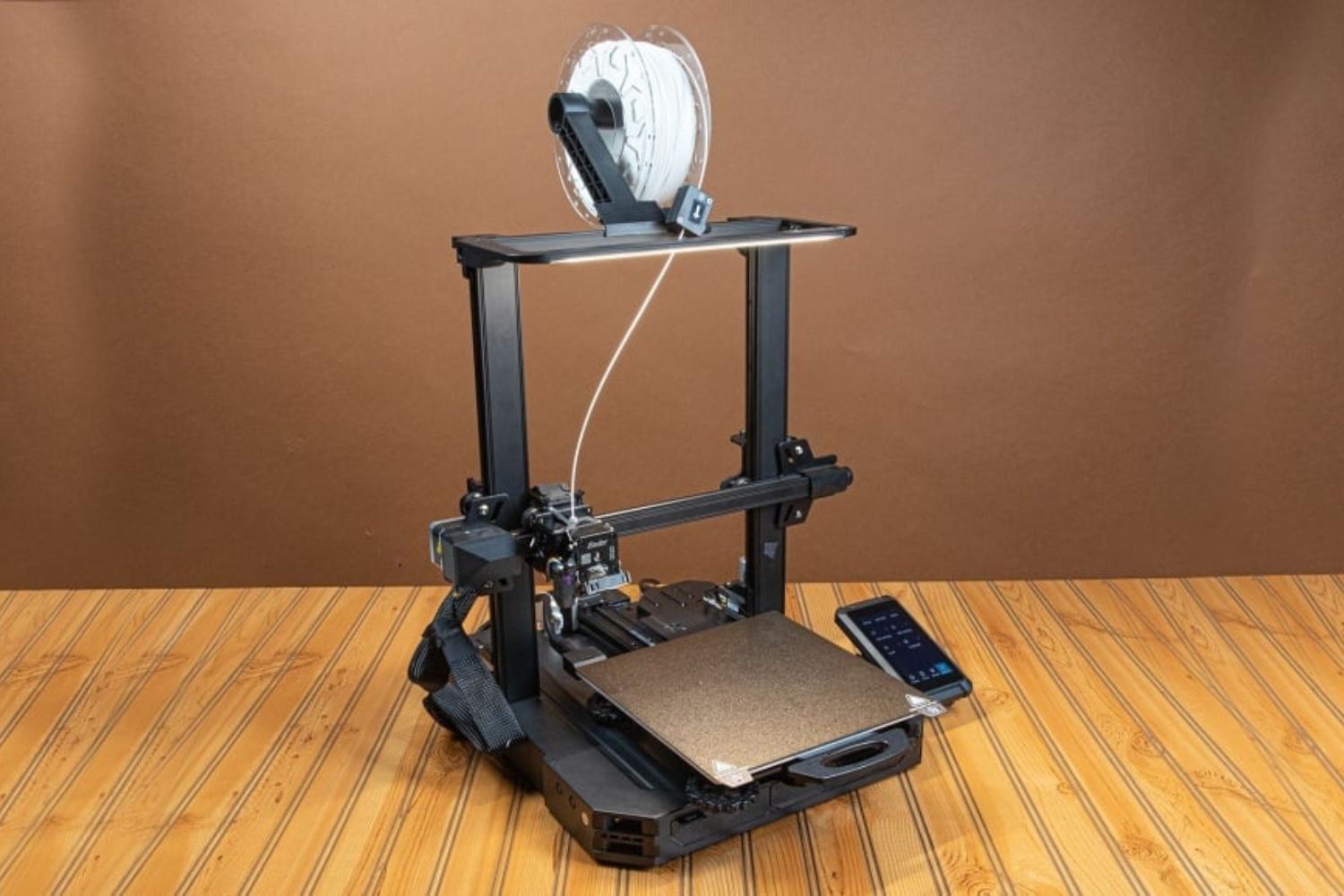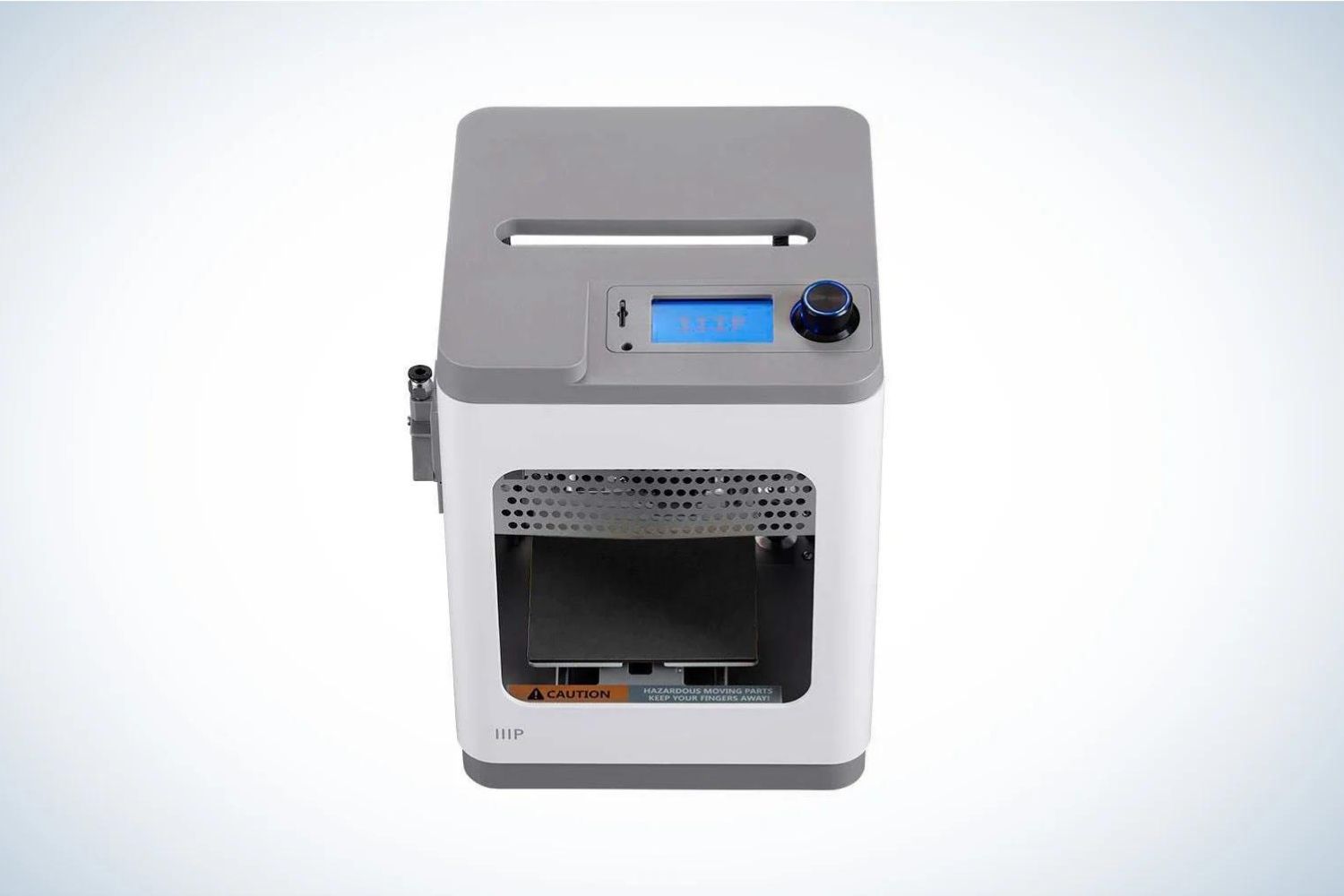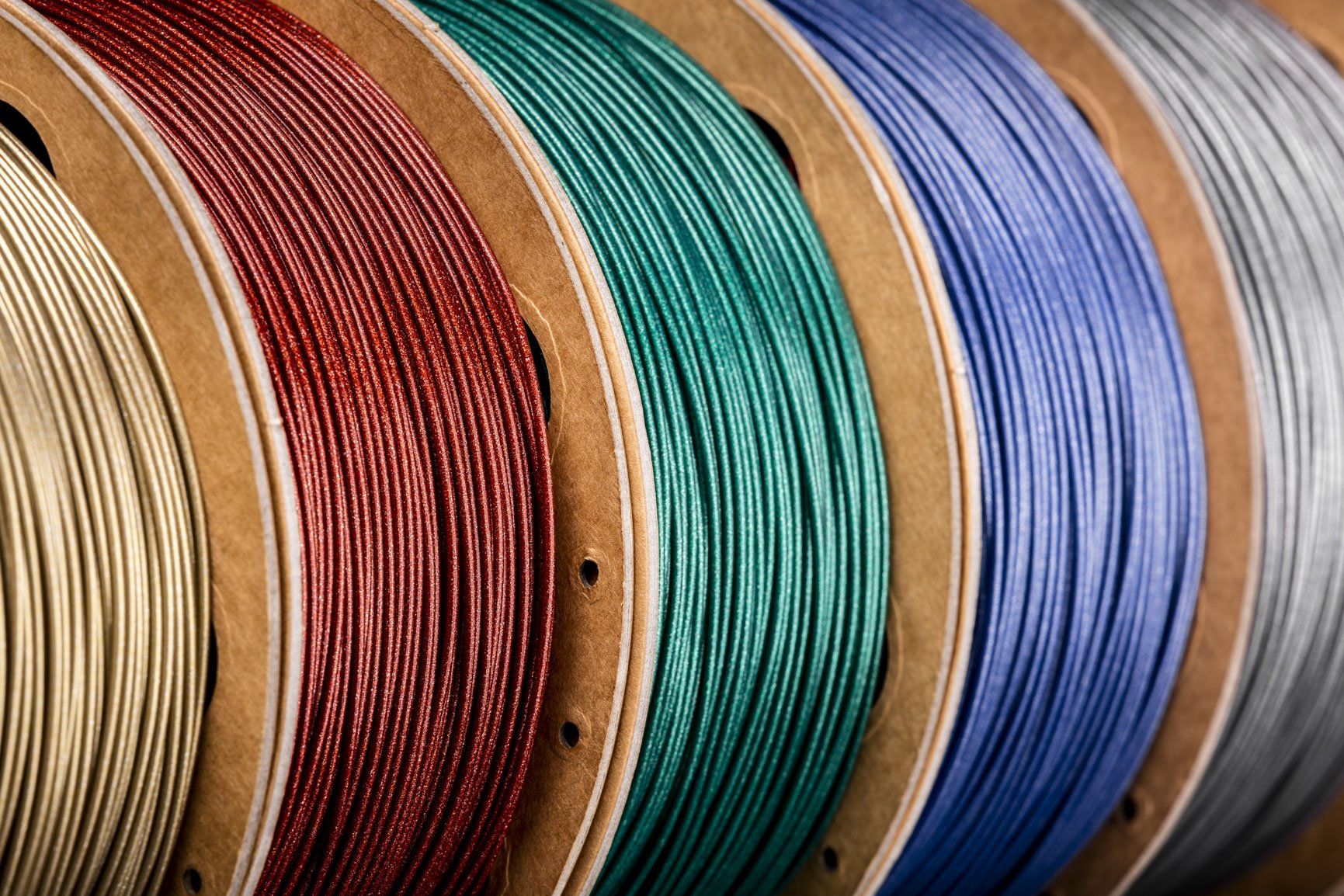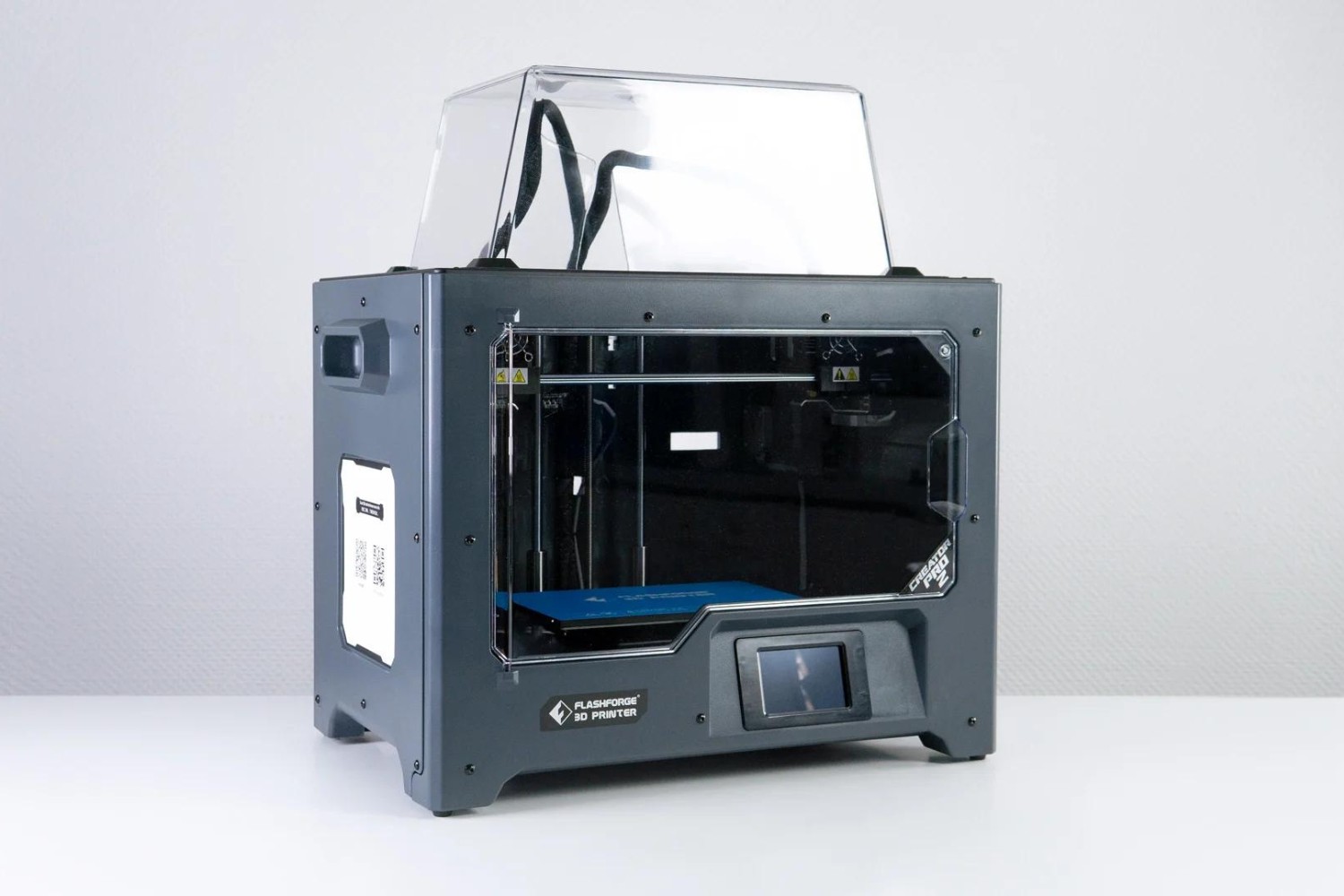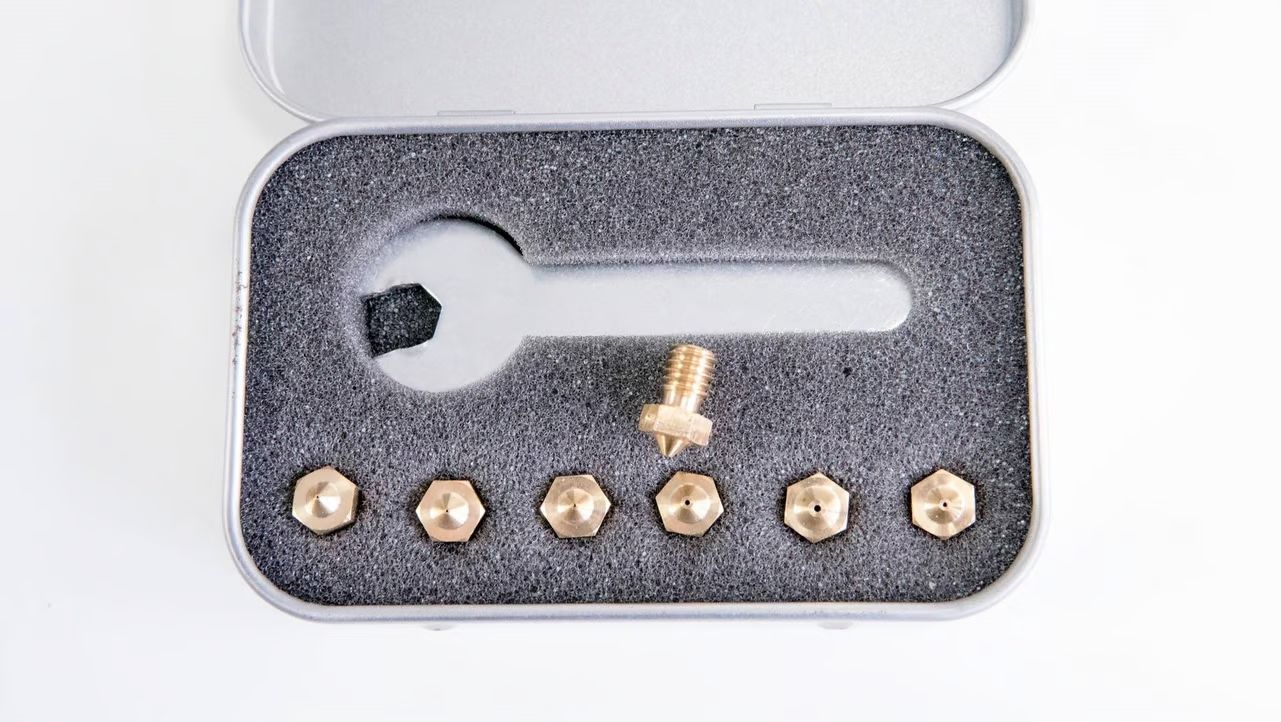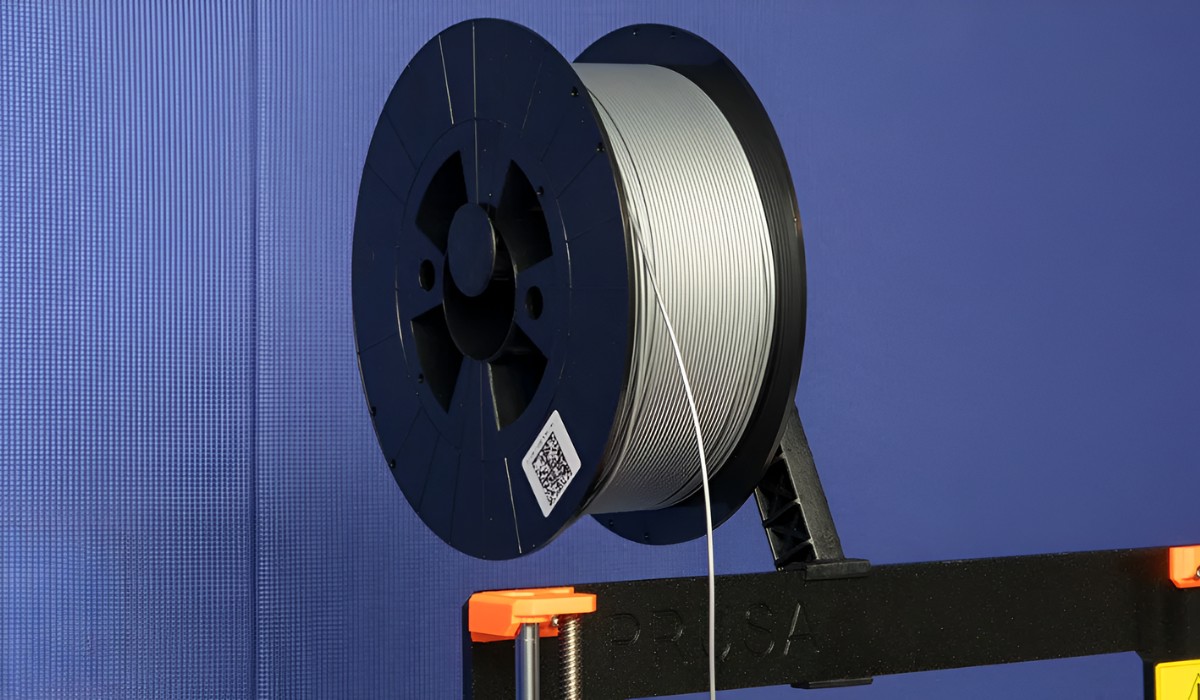Introduction
In today’s advanced technological landscape, 3D printing has taken center stage as a groundbreaking innovation. While most people are familiar with 3D printers that can create objects using plastic, there is a lesser-known but equally fascinating technique known as metal 3D printing. This cutting-edge technology has revolutionized the manufacturing industry, opening up new possibilities for creating complex, customized metal components with precision and efficiency.
Metal 3D printing, also known as additive manufacturing, is a process whereby metal objects are built layer by layer using a combination of digital design and advanced printing techniques. This technology has gained significant attention and interest across various industries, from aerospace and automotive to healthcare and jewelry.
The purpose of this article is to explore the intricacies of metal 3D printing, including its working principle, key components, different printing methods, and the challenges and limitations it faces. Additionally, we will also delve into the exciting applications that metal 3D printing has unlocked, propelling innovation and pushing the boundaries of what is possible.
Metal 3D printing has emerged as a groundbreaking solution that offers several advantages over traditional manufacturing methods. It enables the production of highly complex geometries with intricate details that would be impossible to achieve using conventional techniques. Furthermore, it allows for material customization, enabling engineers to use specific alloys or even combine different metals in a single part.
How Does a 3D Printer Work?
To understand how a metal 3D printer works, it is essential to first grasp the basic principles of regular 3D printing. The fundamental concept remains the same – the creation of a three-dimensional object by building layer upon layer of material. However, the key difference lies in the type of material being used. Instead of plastic, metal powders or filaments are utilized in metal 3D printers.
The process begins with a digital design of the desired object, which is created using Computer-Aided Design (CAD) software. The design is then converted into a format that the printer can understand, such as a standard tessellation language (STL) file. This file contains information about the shape and geometry of the object.
Next, the metal printer prepares the metal material for printing. This can be done in various ways, depending on the specific printing method being used. For example, in Direct Metal Laser Sintering (DMLS), a thin layer of metal powder is evenly spread onto a build plate. In binder jetting, a liquid binding agent is selectively deposited onto a bed of metal powder.
Once the metal material is prepared, the printing process begins. The printer utilizes a laser or electron beam to selectively fuse or melt the metal particles, layer by layer, according to the digital design. This fusion process creates strong bonds between the particles, creating a solid and durable metal object.
As each layer is deposited, the build plate or the print bed lowers to accommodate the next layer of molten metal. This layer-by-layer approach is repeated until the entire object is completely printed. The printing process requires precise control of temperature, laser power, and deposition rate to ensure the desired quality and integrity of the final product.
After the printing is complete, the object may undergo additional post-processing steps, such as heat treatment, polishing, or machining, to improve its surface finish and mechanical properties. These finishing touches help achieve the desired strength, accuracy, and aesthetics of the final metal component.
Metal 3D printing offers immense potential for creating complex and customized metal parts with unmatched precision and efficiency. It represents a paradigm shift in manufacturing, allowing for greater design freedom and reduced lead times. From aerospace components and medical implants to jewelry and automotive parts, metal 3D printing is transforming the way we think about production and innovation.
The Basics of Metal Printing
Metal printing, also known as metal additive manufacturing, is a revolutionary technology that allows for the creation of complex metal objects with intricate geometries. Unlike traditional manufacturing methods that involve subtractive processes like cutting or molding, metal printing builds components layer by layer, offering unprecedented design freedom and customization options.
One of the key aspects of metal printing is the material itself. Metal powders or filaments are used as the raw material, which is carefully selected based on the desired properties of the final object. Common metals used in metal printing include stainless steel, titanium, aluminum, nickel alloy, and cobalt-chrome.
The process of metal printing involves several steps. It starts with the digital design of the object using Computer-Aided Design (CAD) software. This design is then sliced into thin layers, typically ranging from 20 to 100 microns, depending on the specific printer’s capabilities.
The next step is the preparation of the metal material for printing. Different metal 3D printing methods have varying requirements for material preparation. In powder-based methods like Direct Metal Laser Sintering (DMLS) or Selective Laser Melting (SLM), metal powders are spread in thin layers over a build plate. In contrast, filament-based methods use metal filaments that are fed into the printer.
Once the material is ready, the printing process begins. The printer selectively melts or fuses the metal particles together, layer by layer, according to the digital design. This fusion is achieved using a high-power laser or electron beam, which provides the energy necessary to melt the metal powders or filaments.
After each layer is deposited, the build plate or the print bed moves down to accommodate the next layer. This layering process continues until the entire object is printed. The build plate’s movement, along with the precise control of the laser or electron beam, ensures the accuracy and structural integrity of the component.
Once the printing is complete, the printed object undergoes post-processing steps to achieve the desired finished product. This may involve removing support structures, heat treatment, surface finishing, and inspection to ensure its quality and functionality.
Metal printing offers numerous benefits, including reduced lead times, material efficiency, and the ability to produce complex geometries. It enables the production of lightweight yet strong components, suited for demanding applications in industries like aerospace, healthcare, and automotive.
With ongoing advancements in metal printing technology, we can expect even more capabilities and applications in the future. Metal printing holds the potential to transform industries and drive innovation, pushing the boundaries of what is possible in manufacturing.
The Key Components of a Metal 3D Printer
A metal 3D printer is a sophisticated machine that consists of several key components working together to create precise and intricate metal objects. Each component plays a vital role in the printing process, ensuring the accuracy, reliability, and quality of the final product.
1. Build Plate or Print Bed: The build plate, also known as the print bed, is the surface on which the metal object is built. It is typically made of a heat-resistant material and can be moved vertically or horizontally to accommodate the layer-by-layer printing process.
2. Metal Material Delivery System: The metal material delivery system is responsible for feeding the metal powder or filament into the printer. This system ensures a consistent and controlled supply of the metal material during the printing process.
3. Laser or Electron Beam Generator: The laser or electron beam generator is the heart of the metal 3D printer. It provides the energy necessary to melt or fuse the metal particles together. High-power lasers or electron beams are used to achieve precise and localized melting, allowing for intricate and accurate printing.
4. Computer-Controlled System: A metal 3D printer relies on a computer-controlled system to manage the printing process. This system receives the digital design of the object and translates it into instructions for the printer. It controls parameters such as the laser power, scanning speed, and layer thickness to ensure accurate printing.
5. Cooling and Temperature Control: Metal printing involves intense heat due to the melting or sintering process. Therefore, a cooling and temperature control system is necessary to prevent overheating and maintain optimal printing conditions. This system helps to manage the temperature of the build chamber, laser or electron beam, and the metal material itself.
6. Powder or Filament Handling System: In powder-based metal printing methods, a powder handling system is required to distribute and evenly spread the metal powder. It ensures a consistent layer thickness and minimizes powder wastage. In filament-based methods, a filament handling system feeds the metal filament into the printer.
7. Build Chamber: The build chamber is an enclosed space where the printing process takes place. It provides a controlled environment, maintaining suitable temperature, humidity, and gas conditions. This enclosure helps to prevent contamination, oxidation, and distortion of the printed object during the printing process.
8. Control and Monitoring Software: A metal 3D printer relies on specialized control and monitoring software to oversee the printing process. This software allows operators to adjust printing parameters, monitor the progress, and perform diagnostics to ensure optimal performance and troubleshoot any issues that may arise.
These key components work in synergy to print complex metal objects with precision and accuracy. Metal 3D printing represents a remarkable leap forward in manufacturing technology, offering unparalleled design freedom and the ability to create intricate and customized metal components for various industries.
Types of Metal 3D Printing Methods
Metal 3D printing encompasses several different methods, each with its unique approach to fabricating metal objects. These methods utilize various technologies and processes to achieve the desired results. Let’s explore some of the most common types of metal 3D printing methods:
1. Direct Metal Laser Sintering (DMLS): DMLS is one of the most widely used metal 3D printing methods. It involves spreading a thin layer of metal powder on the build plate and selectively melting the powder using a high-power laser. The laser fuses the metal particles together, layer by layer, forming a solid object. DMLS offers the advantage of producing fully dense parts with complex geometries and excellent surface finish.
2. Selective Laser Melting (SLM): SLM is similar to DMLS but typically uses higher laser power and operates in a fully melted state. The metal powder is melted completely rather than sintered, resulting in denser and stronger parts. SLM is ideal for producing high-quality metal parts with intricate details, making it popular in aerospace and medical industries.
3. Electron Beam Melting (EBM): EBM utilizes an electron beam instead of a laser to melt metal powder. The electron beam generates high-energy electrons that melt the metal powder, allowing for the fabrication of large and complex parts. EBM is commonly used for creating structural components in aerospace and defense applications due to its ability to produce parts with excellent mechanical properties.
4. Binder Jetting: Binder jetting is a powder-based metal 3D printing method that involves spreading a layer of metal powder and selectively depositing a binder using inkjet printing technology. The binder acts as an adhesive, bonding the metal particles together. After the printing is completed, the part is further treated to remove excess powder and achieve its final strength. Binder jetting is known for its speed and cost-effectiveness, making it suitable for producing large quantities of metal parts.
Each method has its advantages and limitations, and the choice of the printing method depends on the specific requirements and application of the metal part. They all share the common goal of enabling the creation of complex and customized metal components that would be challenging or impossible to produce using traditional manufacturing methods.
Direct Metal Laser Sintering (DMLS)
Direct Metal Laser Sintering (DMLS) is a metal 3D printing method that utilizes a high-power laser to selectively melt or sinter layers of metal powder, building up a solid metal object. It is a popular and widely adopted technique due to its ability to produce fully dense parts with complex geometries.
The process of DMLS begins with the preparation of a thin layer of metal powder that is evenly spread across the build plate. The laser then scans the surface, selectively melting the powder according to the digital design of the object. As each layer is completed, the build plate descends, and a new layer of metal powder is applied on top. This layer-by-layer approach continues until the entire object is printed.
DMLS offers several advantages over traditional manufacturing methods. One of the key benefits is its ability to produce intricate and highly detailed parts that would otherwise be difficult to manufacture using conventional techniques. The high-power laser allows for precise control over the melting process, resulting in accurate geometries and fine feature resolution.
Furthermore, DMLS enables the production of fully dense metal parts, meaning there are no voids or porosity within the printed object. This ensures structural integrity and mechanical strength, making DMLS suitable for applications that require robust and reliable components. It also allows for the incorporation of complex internal structures, such as lattice-like designs that can enhance weight reduction and structural performance.
The versatility of materials is another advantage of DMLS. It supports a wide range of metal powders, including stainless steel, titanium, aluminum, and nickel alloy. This versatility opens up possibilities for various applications across industries like aerospace, automotive, medical, and tooling.
Post-processing plays a crucial role in DMLS to achieve the desired final part. Printed objects typically require support structures during the fabrication process, which need to be removed after printing. Post-processing steps may also include heat treatment, surface finishing, and machining to achieve the desired surface quality, dimensions, and mechanical properties.
Despite its many advantages, DMLS does have some limitations. Print times for large and complex objects can be lengthy, and the high costs associated with equipment and materials can be prohibitive for smaller-scale production. However, as the technology continues to evolve and become more accessible, these limitations are gradually being addressed.
Direct Metal Laser Sintering (DMLS) has revolutionized the manufacturing industry by enabling the production of complex, fully dense, and highly customized metal parts. With its ability to create intricate geometries and utilize a wide range of metal materials, DMLS has become a key player in advancing various fields of engineering, design, and innovation.
Selective Laser Melting (SLM)
Selective Laser Melting (SLM) is a metal 3D printing method that offers precise control over melting and results in fully dense metal parts. SLM uses a high-power laser to selectively melt metal powder, layer by layer, creating complex and high-quality metal components.
The process of SLM starts with a thin layer of metal powder being evenly spread across the build plate. The laser then scans the surface, selectively melting the powder based on the digital design of the object. The laser’s high power allows for complete melting of the metal particles, resulting in parts with high density and excellent mechanical properties.
One of the major advantages of SLM is its ability to create complex geometries with exceptional detail. The high precision and accuracy of the laser enable the fabrication of intricate designs, including thin walls, internal channels, and intricate lattice structures. This makes SLM well-suited for applications in aerospace, medical, and other industries where lightweight and high-performance components are essential.
The choice of materials in SLM is vast, including stainless steel, titanium alloys, aluminum alloys, cobalt-chrome alloys, and more. This versatility allows for the production of parts with specific material properties, such as high strength, corrosion resistance, or biocompatibility. The ability to utilize different materials makes SLM an attractive option for a wide range of applications.
Post-processing steps are an important consideration in SLM. After printing, the parts typically undergo processes such as removing support structures, heat treatment, and surface finishing. These steps are crucial for achieving the desired mechanical properties and surface quality of the final product.
Despite its advantages, SLM does have some limitations. The high power laser used in SLM can generate significant heat, which may lead to thermal stresses and distortion in larger parts. Additionally, the build volume in SLM machines is generally smaller compared to other metal 3D printing methods. However, ongoing advancements in technology are continually addressing these limitations.
Selective Laser Melting (SLM) is a powerful metal 3D printing method that enables the creation of complex, fully dense metal parts with exceptional detail and material versatility. With its potential for high-performance components in various industries, SLM continues to push the boundaries of what is achievable in metal additive manufacturing.
Electron Beam Melting (EBM)
Electron Beam Melting (EBM) is a metal 3D printing method that utilizes an electron beam to selectively melt metal powder, creating complex and large-scale metal components. EBM offers distinct advantages in terms of scalability and the ability to produce parts with exceptional mechanical properties.
The EBM process begins by spreading a layer of metal powder on the build plate. An electron beam, generated by a high-powered electron gun, scans across the powder surface, selectively melting the metal particles according to the digital design. The electron beam’s energy is carefully controlled to ensure precise melting while minimizing heat distortion.
One of the primary advantages of EBM is its ability to produce large and robust metal parts. Due to the electron beam’s high power and the vacuum environment in which the process takes place, EBM allows for the printing of parts on a larger scale than other metal 3D printing methods. This makes EBM highly suitable for producing aerospace and automotive components that require exceptional strength and durability.
Moreover, EBM offers excellent material properties and high density in the printed object. The localized melting and rapid solidification of the metal powder result in parts with minimal residual stress, reduced porosity, and excellent mechanical properties. This makes EBM ideal for applications that demand parts with superior strength, such as in the aerospace and defense industries.
Another advantage of EBM is the ability to print parts with complex internal geometries. EBM’s ability to melt the metal powder from multiple angles enables the creation of intricate structures, including lattices and internal channels. This capability opens up possibilities for lightweight designs and improved performance in industries where weight reduction is crucial.
Post-processing in EBM involves removing any remaining support structures and heat treating the printed parts to optimize their properties. The heat treatment process helps relieve internal stresses and enhance the mechanical characteristics of the final object.
While EBM offers numerous advantages, there are some considerations to keep in mind. The process requires a vacuum environment, which can be costly to maintain, and the equipment itself can have a higher initial investment cost compared to other metal 3D printing methods. Additionally, the printing speed in EBM can be relatively slow due to the nature of the scanning process.
Despite these limitations, Electron Beam Melting (EBM) remains a powerful metal 3D printing technique suitable for producing large and robust metal parts with exceptional mechanical properties. With its ability to create complex internal structures and superior material characteristics, EBM is finding applications in various industries where high-performance components are required.
Binder Jetting
Binder jetting is a metal 3D printing method that utilizes powder-based technology to create metal objects. This additive manufacturing process involves selectively depositing a liquid binding agent onto layers of metal powder, resulting in the formation of a solid metal part. Binder jetting offers unique advantages, including speed, cost-effectiveness, and the ability to produce large quantities of metal parts.
The binder jetting process begins with a thin layer of metal powder spread across the build platform. A print head selectively deposits a liquid binder onto the powder layer, binding the particles together. This is followed by another layer of metal powder, and the process is repeated layer by layer until the object is fully printed.
One of the significant advantages of binder jetting is its high printing speed. The ability to simultaneously deposit the binder onto the powder layers allows for rapid fabrication of metal parts. This makes binder jetting an ideal choice for producing large quantities of metal components within a short period.
In addition to speed, binder jetting is a cost-effective method of metal 3D printing. The use of metal powders and a liquid binder is less expensive compared to other metal 3D printing methods that employ lasers or electron beams. The print materials are readily available, making binder jetting a cost-effective option for both prototyping and production.
Binder jetting also offers design flexibility and the capability to create complex geometries. The non-contact nature of the process allows for the production of objects with intricate details, thin walls, and intricate features. This flexibility in design opens up possibilities for customized and highly specialized metal parts.
After the printing is complete, the part typically requires post-processing to remove excess powder and enhance its mechanical properties. The post-processing steps may include removing the loosely bound powder, sintering the part in a furnace to achieve densification, and applying surface finishing techniques for improved aesthetics.
Despite its advantages, binder jetting does have some limitations. The printed parts can have lower density compared to other metal 3D printing methods. However, post-processing steps, such as sintering, can address this limitation and improve the mechanical properties of the final part. Additionally, binder jetted parts may require additional support structures during printing, which need to be removed or modified in the post-processing stage.
Binder jetting is finding applications in various industries, including automotive, aerospace, and consumer goods. It allows for the rapid production of metal parts with complex geometries, making it an attractive option for both rapid prototyping and low-volume production scenarios.
Challenges and Limitations of Metal 3D Printing
While metal 3D printing has undoubtedly revolutionized the manufacturing industry, it also faces several challenges and limitations. Understanding these factors is crucial for harnessing the full potential of this technology and addressing the existing barriers to its widespread adoption.
One of the primary challenges in metal 3D printing is the high cost of equipment and materials. Compared to traditional manufacturing methods, the initial investment required for metal 3D printers and the associated materials can be significant. Additionally, the cost of post-processing, such as heat treatment or machining, adds to the overall expense of metal 3D printing.
Another challenge is the limited build size of 3D printers. The size of the build chamber can constrain the size of the metal objects that can be printed. This limitation poses challenges for industries that require large-scale metal components, such as in the aerospace or construction sector. However, advancements in printer technology are gradually addressing this limitation, with the development of larger and more capable metal 3D printers.
Quality control is another area of concern in metal 3D printing. Ensuring the dimensional accuracy, material integrity, and surface finish of printed parts can be challenging. Factors such as thermal stresses, residual porosity, and distortion during the printing process can affect the overall quality of the finished part. Implementing rigorous testing and inspection protocols is necessary to maintain consistent and reliable production standards.
Material availability is a limitation that relates to the range of metal powders or filaments that can be used in 3D printing. While the selection of metal materials has expanded significantly in recent years, certain metals or alloys may still have limited availability or may be cost-prohibitive. This limitation can impact the material properties of the printed parts and restrict the range of industrial applications.
Post-processing requirements and considerations are also important challenges in metal 3D printing. Often, printed parts require additional processes such as heat treatment, machining, or surface finishing to achieve the desired mechanical properties and surface quality. These post-processing steps add to the production time and cost, and careful planning is necessary to optimize the overall manufacturing process.
Moreover, design constraints and limitations can affect the feasibility and viability of metal 3D printing. The design guidelines for additive manufacturing may differ from those of traditional manufacturing processes. Complicated geometries, intricate internal structures, and overhangs may require support structures or modification for successful printing. Design optimization and adaptation to the specific requirements of 3D printing are essential for maximizing the benefits of this technology.
Despite these challenges and limitations, metal 3D printing continues to evolve and improve. Ongoing research and innovation are addressing these barriers, making metal 3D printing more accessible, cost-effective, and reliable. As the technology advances, it holds immense potential to transform industries, enabling the production of complex and customized metal components with unprecedented efficiency and design freedom.
Applications of Metal 3D Printing
Metal 3D printing has broad applications across various industries, revolutionizing the way we design, prototype, and manufacture metal components. The unique capabilities of metal 3D printing have unlocked new opportunities for innovation and customization. Let’s explore some of the key applications of metal 3D printing.
1. Aerospace: The aerospace industry is one of the primary beneficiaries of metal 3D printing. It enables the production of lightweight, complex, and high-performance components. Metal 3D printing in aerospace spans from engine parts and turbine blades to brackets and structural components, offering improved fuel efficiency, reduced weight, and enhanced functionality.
2. Medical and Healthcare: Metal 3D printing has transformed the medical industry, allowing for the production of customized and patient-specific implants, prosthetics, and surgical instruments. The ability to create intricate and precise designs tailored to individual patient needs improves surgical outcomes, patient comfort, and overall healthcare efficiency.
3. Automotive: Metal 3D printing is reshaping the automotive industry by enabling the production of lightweight and optimized parts. This includes components such as engine parts, brackets, and suspension elements, resulting in increased fuel efficiency, reduced vehicle weight, and improved performance.
4. Tooling and Manufacturing: Metal 3D printing offers significant benefits in tooling and manufacturing applications. It allows for the rapid production of intricate molds, dies, jigs, and fixtures, reducing lead times and lowering production costs. The ability to create complex geometries and custom tooling designs enhances manufacturing efficiency and flexibility.
5. Jewelry and Fashion: Metal 3D printing revolutionizes the jewelry and fashion industry by offering intricate and customizable designs that were previously unattainable through traditional manufacturing methods. The technology enables the creation of complex and unique jewelry pieces with fine details and intricacies, pushing the boundaries of contemporary artistry.
6. Energy: Metal 3D printing plays a crucial role in the energy sector. It facilitates the production of complex components for renewable energy technologies such as wind turbines, solar panels, and energy storage systems. The customization options provided by metal 3D printing enable the design of efficient and optimized parts for energy generation and storage applications.
7. Defense and Aerospace: Metal 3D printing has significant applications in defense and aerospace industries, where the production of complex and lightweight components is critical. It enables the creation of intricate parts, such as missile components, satellite features, and defense equipment, with reduced weight and enhanced performance characteristics.
8. Research and Development: Metal 3D printing is widely used in research and development environments. It allows for rapid prototyping and iterative design testing, enabling engineers to quickly evaluate and refine their designs. Metal 3D printing accelerates the innovation process, reduces time-to-market, and facilitates the creation of complex prototypes for various industries.
These are just a few examples of the many industries leveraging the advantages of metal 3D printing. As the technology continues to advance, the range of applications will continue to expand, transforming the way we design and manufacture metal components across diverse sectors.
Conclusion
Metal 3D printing has emerged as a revolutionary technology that has transformed the manufacturing industry. It offers unprecedented capabilities in creating complex and customized metal components with exceptional precision and efficiency. From aerospace and automotive to medical and jewelry, metal 3D printing has found applications in a wide range of industries, pushing the boundaries of what is possible in design and production.
The ability to produce fully dense parts with intricate details, customized geometries, and optimized material properties sets metal 3D printing apart from traditional manufacturing methods. The different metal 3D printing methods, such as Direct Metal Laser Sintering (DMLS), Selective Laser Melting (SLM), Electron Beam Melting (EBM), and Binder Jetting, offer distinct advantages and cater to various requirements.
However, metal 3D printing is not without its challenges and limitations. Cost, limited build size, material availability, and post-processing requirements pose obstacles that need to be addressed for wider adoption and scalability. Ongoing advancements in technology and continued research efforts are gradually overcoming these barriers, making metal 3D printing more accessible, cost-effective, and capable of producing reliable and high-quality parts.
The applications of metal 3D printing continue to grow across industries, revolutionizing how we design, prototype, and manufacture metal components. From aerospace and automotive to medical and research, metal 3D printing has enabled the production of lightweight, complex, and customized parts with improved functionality and performance. It has transformed industries by offering design freedom, reduced lead times, and material efficiency.
As the technology evolves, the potential for metal 3D printing reaches new heights. Advancements in larger build sizes, faster printing speeds, new materials, and improved quality control mechanisms will continue to drive innovation and open up new possibilities. Metal 3D printing has the power to reshape industries, accelerate product development, and unlock unprecedented design and manufacturing opportunities.
With the ongoing advancements and increasing adoption of metal 3D printing, the future looks promising for this transformative technology. As more businesses and industries harness its capabilities, we can expect to see even greater advancements in design, production, and customization. Metal 3D printing has revolutionized the way we think about manufacturing, propelling us into a new era of possibilities and innovation.







